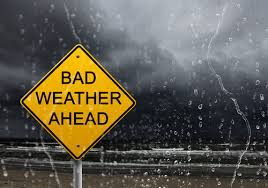by Rochelle Sparko, CFSA’s Policy Director
 Catastrophic flooding hit NC last year and SC the year before, damaging many farmers’ crops. These widespread disasters got me wondering whether CFSA’s member-farmers are aware of the different ways they can protect themselves from the financial consequences of natural disasters. To that end, I’ve put together some basic information about NAP. Take a look, and if you have questions, contact your local FSA office.
Catastrophic flooding hit NC last year and SC the year before, damaging many farmers’ crops. These widespread disasters got me wondering whether CFSA’s member-farmers are aware of the different ways they can protect themselves from the financial consequences of natural disasters. To that end, I’ve put together some basic information about NAP. Take a look, and if you have questions, contact your local FSA office.
Noninsured Crop Disaster Assistance Program, or NAP, provides financial assistance to farmers when crops fail as the result of a natural disaster. NAP doesn’t work well for all farmers, but it’s worth a look to see if it could be a worthwhile purchase on your farm. Check out this document from FSA that gives some basic information about which farmers and which crops are eligible for NAP.
Most farmers will have to pay for NAP. There is a service fee that ranges between $250 and $1,875 (for farmers with land in multiple counties). Farmers can also elect additional coverage, which incurs a premium cost on top of the service fee. Note that the service fee may be waived for beginning, limited resource and targeted underserved farmers and rancher and that those farmers may also be eligible for a premium reduction.
Deadlines to apply for the program vary by the crop you want covered and by state. We’ve attached the NC and SC charts that show the application deadlines for each crop. Are you a certified organic farmer? NAP in NC has organic price elections for blueberries, peaches, green beans, apples, cabbage and white potatoes. SC has requested organic price elections for broccoli and cabbage and should have word about whether those price elections will be available for growing year 2018 on February 14, 2017, so be sure to ask your local FSA office about them if you’re interested in electing coverage at the organic price this fall.
2017 NAP Closing Dates – North Carolina
2017 NAP Closing Dates – South Carolina


